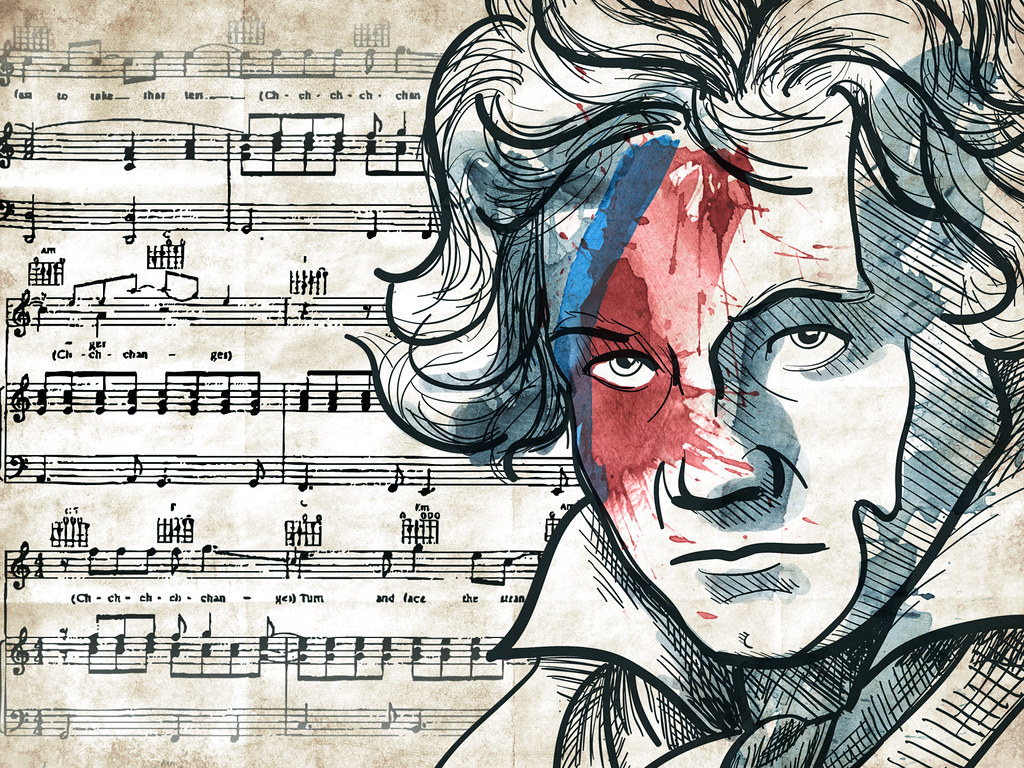Ludwig van Beethoven’s Piano Concerto No. 3 in C minor, Op. 37 stands as one of his most powerful and dramatic early works. Composed between 1799 and 1803, this concerto marks a significant transition in Beethoven’s compositional style, moving away from the classical elegance of Mozart and Haydn towards the bold, innovative spirit that would define his middle period.
Composition and Background
Beethoven began sketching ideas for his Piano Concerto No. 3 in the late 1790s, a time when he was establishing himself as both a composer and a virtuoso pianist in Vienna. The work was completed in 1803 and premiered on April 5 of that year, with Beethoven himself as the soloist. Notably, he had not fully written out the solo piano part at the time of the performance, as he often played from memory or improvised sections. His friend and student Ignaz von Seyfried, who turned the pages for him, later recalled that the score contained only a few “hieroglyphs” that Beethoven used as cues.
The concerto was dedicated to Prince Louis Ferdinand of Prussia, an accomplished musician and patron of the arts. It was published in 1804 and quickly became a staple of the piano concerto repertoire.
Musical Structure and Innovations
The concerto consists of three movements:
- Allegro con brio – The first movement, in C minor, opens with a dramatic orchestral introduction before the piano enters with bold, assertive chords. The interplay between the soloist and the orchestra is striking, showcasing Beethoven’s evolving approach to thematic development and contrast.
- Largo – The second movement shifts to a serene and lyrical E major, offering a striking contrast to the stormy first movement. The delicate, song-like piano melody is accompanied by soft orchestral textures, creating a deeply expressive and introspective atmosphere.
- Rondo: Allegro – The final movement returns to C minor with a spirited and rhythmic theme that propels the concerto towards an energetic conclusion. The playful, almost dance-like interplay between piano and orchestra builds tension before resolving in a triumphant C major coda.
This concerto was groundbreaking for its time, expanding the role of the soloist and introducing a more symphonic treatment of the piano concerto form. The boldness of its harmonies and the expressive depth of its slow movement were especially admired.
Impact and Legacy
Beethoven’s Piano Concerto No. 3 was a turning point in his compositional career, setting the stage for his later, more ambitious concertos, particularly the Emperor Concerto (Piano Concerto No. 5). The work’s dramatic use of C minor—a key Beethoven often associated with struggle and intensity—links it thematically to his Pathétique Sonata and Symphony No. 5.
The concerto remains a favorite among pianists and orchestras worldwide, admired for its dramatic contrasts, technical brilliance, and emotional depth. It is frequently performed and recorded, continuing to captivate audiences more than two centuries after its creation.
With Piano Concerto No. 3, Beethoven not only paid homage to his predecessors but also forged a new path, demonstrating his individuality and setting the standard for the Romantic piano concerto that would follow.


Comments are closed